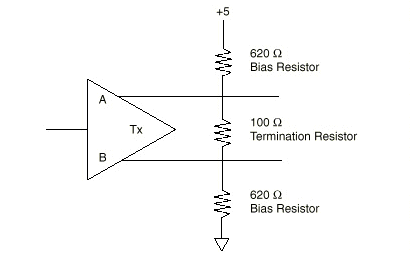Archie
Member
In theory the mixing of vendor products should not matter since they should all comply to the standard.The master does wait for reply from each node according to a set timer. In the meantime it tries to request from other nodes.
I’m not sure about silence time, since I’ve never heard of it before.
Do you think issues like that can occur when the master is not from same vendor as the slaves?
As an example of where not following the silence period can cause a lack of response, consider that a request is sent, then your software hesitates to calculate the checksum. The checksum is then sent, but there was a 2 character time delay. The receiving device may discard the part of the packet without the checksum since it saw more than a 1.5 character silence and not receive it all as a single packet.
Now consider the other possibility. Your software sends a packet to one device, but does not wait 3.5 characters before sending data to the second device. The first device may concatenate both of the packets into a single packet therefore not seeing it as valid.
In short, be sure your software is putting all data of a packet on the wire without hesitation. Also be sure to wait long enough before transmitting the next packet.








